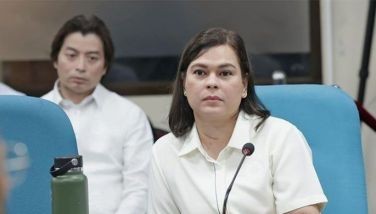Principled enemies ug constructive criticisms
Padayon kita sa atong series on leadership. Sa iyang lindog nga giulohan Tests of Leadership, si Conrado de Quiros, mahitungod sa pag-reconcile with political enemies, nagkanayon: “The principle is not to reconcile with enemies, it is to reconcile with principled enemies.”
Duna may mga kaatbang, o mga kaaway sa politika nga ang trabaho mao ra gyud ang pagpanaway, ug pagdaot sa ilang mga political enemies. Dili kini sila de-prinsipyo. Manaway lang gyud for the sake sa pagpanaway. Dulot sa bukog ng ilang kasuko ug kasilag ngadto sa ilang mga kaatbang sa politika. Wala na kitay mahimo niini.
Isip leader sa usa ka organization, o sa gobiyerno as an organization, matud ni Quiros, “you may agree to bury the hatchet with your personal enemies, but you may not agree to bury the cases against the people’s enemies.”
Adunay giingon nga constructive criticism. Dili kini magagikan sa imong mga personal enemies.
Apan mahimo nga magagikan sa mga kaaway sa lungsod, mga kaaway nga giksohan, kay ang lungsod mahimo man nga imong higala. Managsama ang inyong mga tumong: what is good for the country.
Unsa man kining constructive criticism? Goog;e: “Constructive criticism focuses on providing constructive feedback, supported by specific examples, to help you improve in some area. Constructive criticism should be offered in a friendly manner with good intentions. Ideally, the person offering constructive criticism should also be prepared to help brainstorm possible solutions and next steps in order to serve as a valuable tool in the growth process.”
So, ang constructive criticism dili pag-away, ni pagpangasaba sa nakahimog kasaypanan, kundili pagmaymay o pagtambag unsay angay ug hustong buhaton. Niay example dinhi, "Helen, I always appreciate how productive and reliable you are, but I have noticed a change in your performance lately. Turning in assignments late is unlike you. I wanted to check in with you to discuss any challenges you have been facing and understand how I can support you better."
Kalma kaayo. Wala kasab-I si Helen, so wala siya mahiubos, wala ma-discourage ug wala magbaton og kayugot batok sa iyang gitrabahoan o manager.
How to give (and take) constructive criticism by Julia Martins. “Criticism, though often difficult to accept, is key for personal and professional growth. Constructive criticism is feedback that is specific, actionable, and focused on improvement rather than personal attacks. Dili mga atake personal. Kundili, makapalambo both sa nag-criticize ug sa gi-criticize.
Nia pa. “Criticism of any kind can be hard to swallow, especially when it comes to something you spent time and energy on. Inherently, we all want to do a good job. But criticism is just as important as praise, if not more so. Good, constructive feedback can help you improve and guide you towards new heights you might not have achieved otherwise.”
Tinuod lisud tunlon ang criticism, apan kinahnglanon kini gumikan sa mga positive effects niini.
Ug balik ni Quiros: “If you can unite with you, your enemies, you can most certainly unite with your friends.” In Philippine politics, ang imong mga friends karon, imo nang mga enemies ugma, sayo pa sa buntag.
- Latest






















